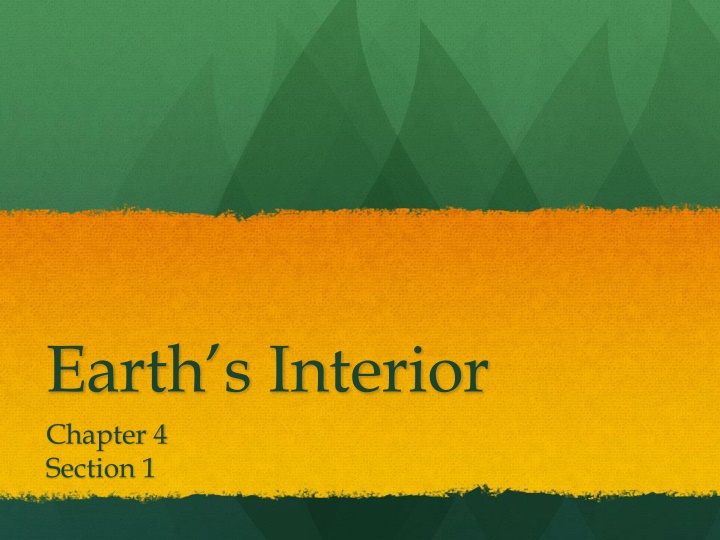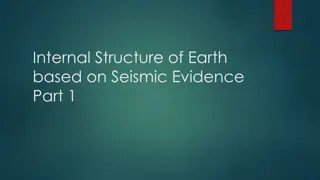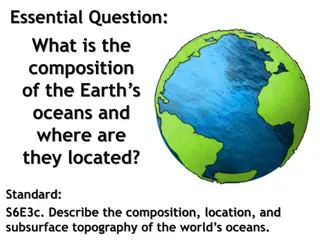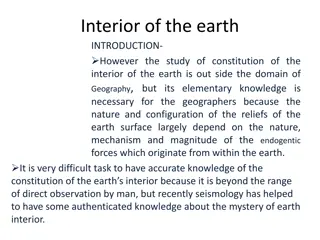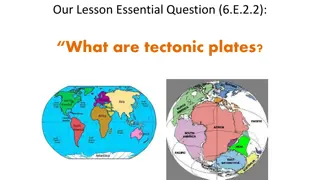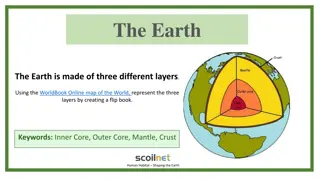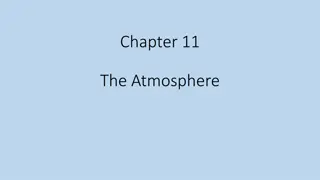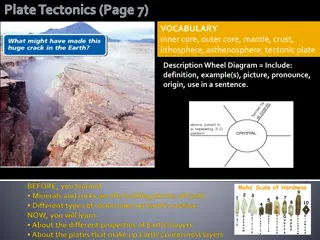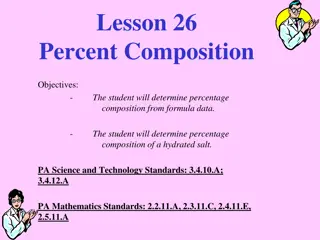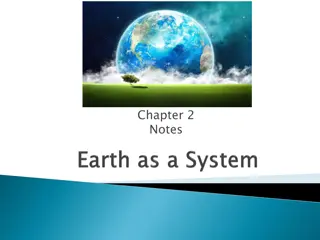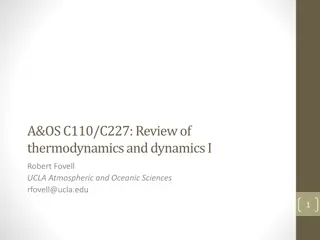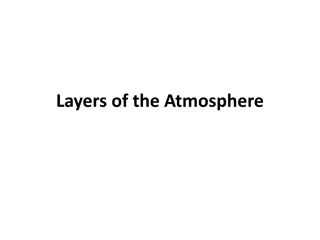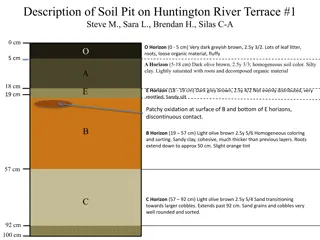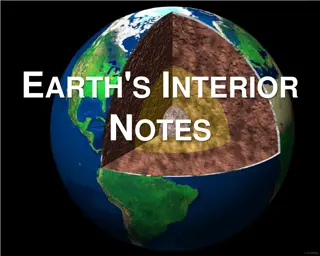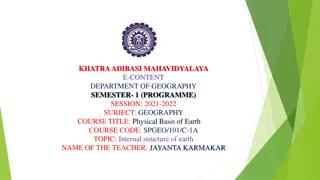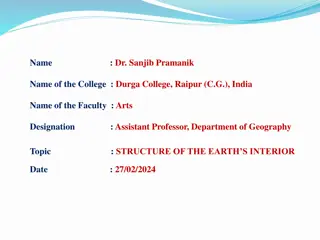Journey into Earth's Depths: Understanding its Layers and Composition
Delve into the inner workings of Earth through seismic waves and drilling samples, revealing a complex structure of layers such as the crust, mantle, outer core, and inner core. Explore the varying temperatures and pressures that shape our planet's composition.
Download Presentation

Please find below an Image/Link to download the presentation.
The content on the website is provided AS IS for your information and personal use only. It may not be sold, licensed, or shared on other websites without obtaining consent from the author.If you encounter any issues during the download, it is possible that the publisher has removed the file from their server.
You are allowed to download the files provided on this website for personal or commercial use, subject to the condition that they are used lawfully. All files are the property of their respective owners.
The content on the website is provided AS IS for your information and personal use only. It may not be sold, licensed, or shared on other websites without obtaining consent from the author.
E N D
Presentation Transcript
Earths Interior Chapter 4 Section 1
Standard S 6.1. b Students know Earth is composed of several layers: a cold, brittle lithosphere, a hot, convicting mantle and a dense metallic core.
Vocabulary Seismic Waves- vibrations that travel through Earth carrying the energy released during an earthquake Pressure- force exerted on a surface divided by the total area Crust- layer of rock that forms Earth s outer surface Mantle- a layer of hot, solid material between Earth s crust and core
Vocabulary Lithosphere-uppermost part of the mantle and the crust Asthenosphere- soft layer of the mantle where the lithosphere floats Outer core- on top of the inner core Inner core solid nickel and iron at the center of the Earth
Exploring Inside Earth Geologists have used 2 types of evidence to learn about Earth s interior: Direct Evidence from rock samples Indirect Evidence from recording and studying seismic waves Holes drilled several kilometers into the crust will provide direct evidence about Earths interior in the form of rock samples.
Observation We cannot look inside the Earth You need indirect observation When an Earthquake occurs, they produce seismic waves. They record the wave and how they travel through Earth. The speed of the waves and the paths they take shows the structure of our planet.
Layers of Earth The 3 main layers of Earth from the outside to the inside are The Crust The mantle The outer core The inner core These layers vary in size, composition, temperature, and pressure.
Temperature/Pressure Temperature As you go down to the inner core, the temperature gets hotter. Pressure The weight of the rock above increases the pressure Just like diving into a swimming pool.
The Crust The crust is a layer of solid rock that includes both dry land and the ocean floor. Crust: the layer of rock that forms Earth s outer skin. The Earth s crust can be compared to the paper thin skin of an onion.
The Mantle A layer of hot rock It is made up of rock that is very hot, but solid. Different layers of the mantle have different physical characteristics. 3,000 kilometers thick Lithosphere- stone, upper most part of the Mantle Asthenosphere- soft layer, weak Lower Mantle- extends all the way to the core
The Core The core is mostly of the metals iron and nickel. A liquid outer core and a solid inner core Outer Core- layer of molten metal that surrounds the inner core (liquid) Inner core- a dense ball of solid metal. Earth s magnetic fields results from movements in the outer core. Core- iron, nickel, oxygen, sulfur, and silicon
Checking for Understanding 1. What are the 4 layers of Earth (outside to inside) A. crust, outer core, inner core, mantle B. mantle, outer core, inner core, crust C. crust, mantle, outer core, inner core. D. outer core, inner core, crust, mantle Answer C.
Checking for Understanding 2. Earth s mantle is A. a layer of molten metal B. a layer of hot rock C. a dense ball of solid metal D. a layer of rock that forms Earth s outer skin Answer B.
Checking for Understanding 3. Earth s magnetic field results from movement in the A. mantle B. outer core C. inner core D. Crust
Guided Practice Independent Practice Guided Practice pg 71 # 8-10 Independent Practice: pg 71-71 # 11- 21 Homework: Earth s Interior
